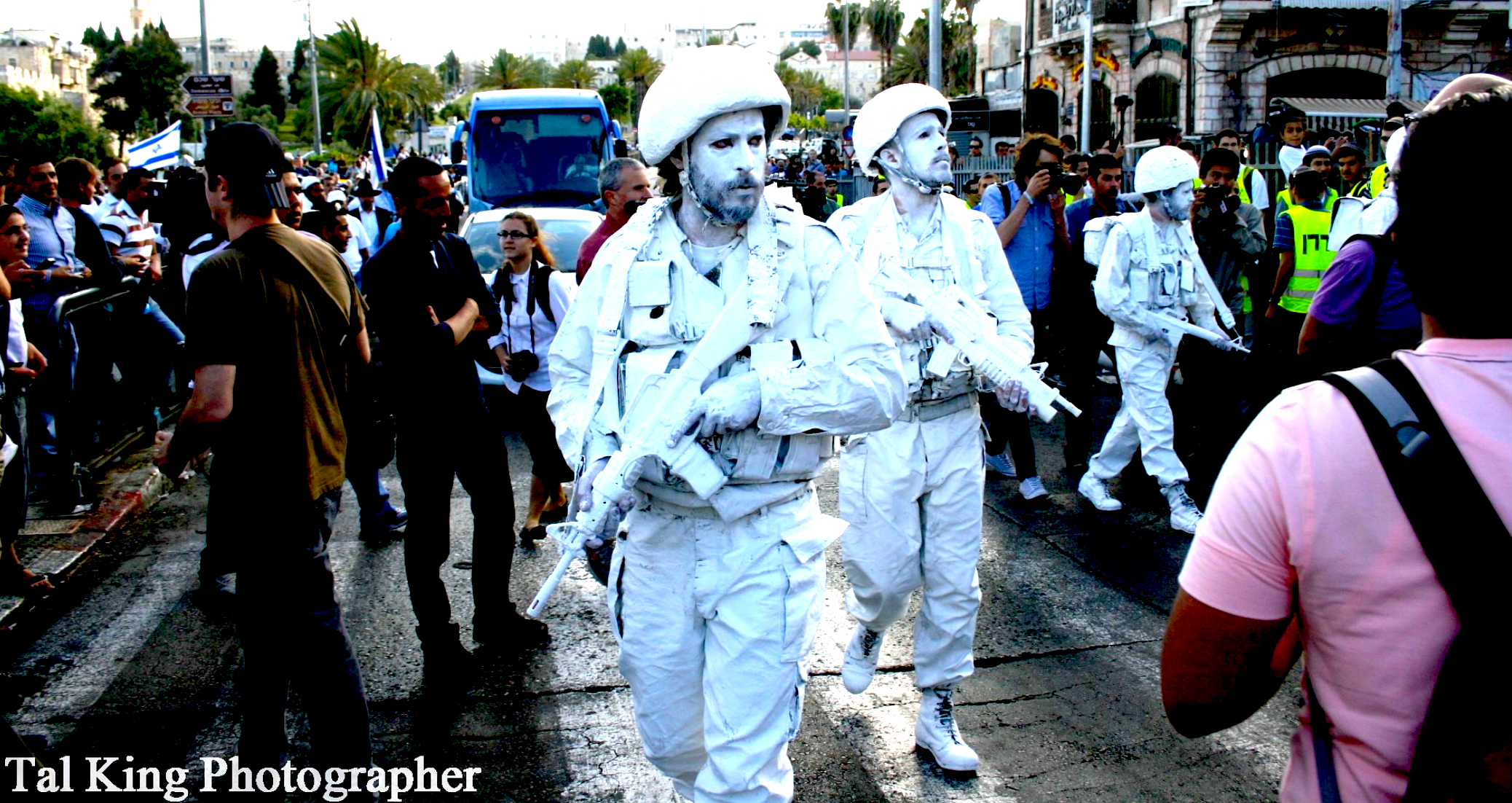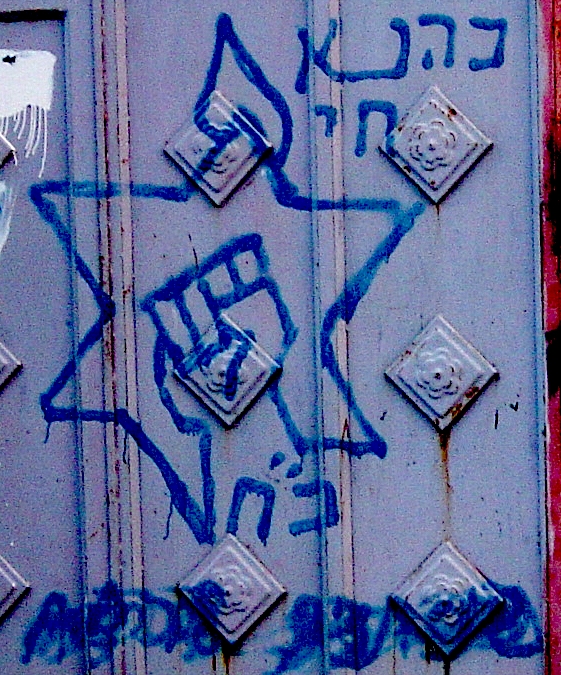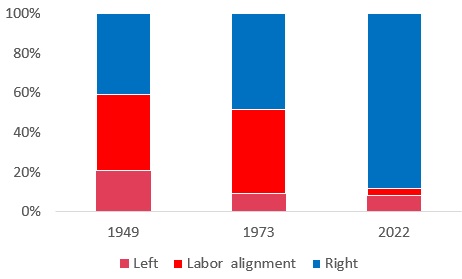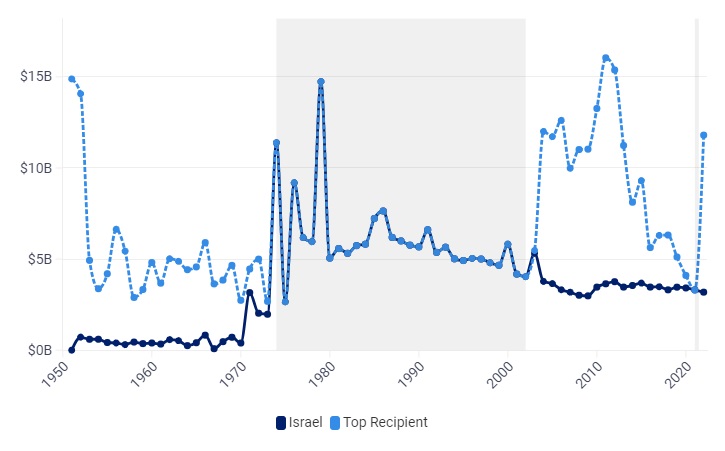After the Camp David Accords, the assassins’ message to peacemakers was loud and clear, writes Dan Steinbock: “Don’t even try.” Part 3 of a 5-part series.

Sept. 23, 2012: Pro-Israeli settlements demonstrators, dressed in white, in march through East Jerusalem. (Tal King, Flickr, CC BY-NC 2.0)
This is the third in a five-part series. Here is part one and two.
By Dan Steinbock
The World Financial Review

Among peace activists in Israel, a longstanding concern was that if Messianic far-right Jewish settlers, many of whom came from the U.S., were permitted to create a substantial de facto presence, it would be legitimised over time by de jure measures.
In the 1980s, Gush Emunim, [the ultranationalist, pro-illegal-settlement, movement] radicalised further, forming the Jewish Underground, a radical terrorist organisation.
Two issues contributed to its creation: the Camp David Accords that led to the Egypt-Israel peace treaty in 1979, which the movement vehemently opposed, and the settlement project itself, which brought the far-right Messianic Jews in close proximity with Palestinian communities.
Through the first half of the 1980s, the Underground conducted several vicious terror attacks, including car bombs against Palestinian mayors, and plotted to blow up the Dome of the Rock at the centre of the Al-Aqsa Mosque.
The effort was to exploit terror to drive Palestinians out of the occupied territories. (See Nur Masalha’s 2000 book, Imperial Israel and the Palestinians: The Politics of Expansion and Nachman Ben-Yehuda’s 2010. Theocratic Democracy: The Social Construction of Religious and Secular Extremism.)
I had no doubts of these extremist trajectories after a meeting in the mid-1970s in Jerusalem with the U.S.-born Rabbi Meir Kahane, the far-right ultra-nationalist politician and later a member of the Knesset until his conviction of terrorism.
Having co-founded the far-right Jewish Defense League in the U.S., Kahane established the ultra-radical Kach Party in Israel. Both used terror to advance their aims.

Kahanist graffiti in Hebron on a Palestinian home, 2006. (Asa Winstanley, Wikimedia Commons, CC BY-SA 2.0)
In the late 1950s, Kahane’s fanatic anticommunism had made him an “informant” with the FBI. (See The False Prophet Rabbi Meir Kahane, From FBI Informant to Knesset Member, by Robert I. Friedman.)
By the 1970s, he promoted ethnic cleansing of Palestinians. As he said at the time, “Every day the Arabs of Israel move closer to becoming a majority. Israel should not be committed to national suicide. Why would we allow demography, geography, and democracy to push Israel closer to the abyss?”
I had never met anyone as full of hate and fully expected Kahane to die in violence.
Fast-forward to November 1990. As I was walking to Grand Central, I heard shots and saw a man running. Kahane had been assassinated in midtown Manhattan. But his spirit lived on.

Prime Minister Yitzhak Rabin with Palestinian leader Yasser Arafat shortly before receieveing the Nobel Peace Price in 1994. (Israel Defense Forces, Flickr, CC BY-NC 2.0)
Just four years later, Yigal Amir assassinated Israeli Prime Minister Yitzhak Rabin. Amir was associated with religious extremists influenced by Kahanism. Like the Hamas offensive, the assassination was initially attributed to an “intelligence failure.” In reality, the murder was due to the failure of the Israel Security Agency (ISA, or Shin Bet). The ISA could have stopped the killer in advance. (See Avner Barnea’s 2017 article, “The Assassination of a Prime Minister” in the International Journal of Intelligence, Security, and Public Affairs.)
Was the assassination “allowed” to happen by the far-right that had most to gain from it? In a sense, Rabin’s assassination was the Israeli mirror image of the prior assassination of Egyptian President Anwar El-Sadat, which has been attributed to the Egyptian Islamic Jihad. Their members later figured among the fedayeen in Afghanistan who were armed, trained and financed by the C.I.A.’s Operation Cyclone. (See Christian Parenti, 2001, “Law, Order, and Neoliberalism.)

Sadat with U.S. President Jimmy Carter and Israeli Prime Minister Menachem Begin at Camp David in September 1978. (Wikimedia Commons)
The assassins’ message to peacemakers was loud and clear: Don’t even try!
These polarising trends occurred in parallel with the plunge of Israeli Labor, U.S. economic and military aid and growing influence of neoliberal economics.
Plunge of Labor Alignment, Rise of US Aid
During the early days of independence, Israel’s politics were dominated by Labor alignments from David Ben-Gurion, Israel’s founder and first prime minster, to Golda Meir, the country’s fourth prime minister.
In 1949, the Labor alignment (46) and the left (25) had over 70 seats in the 120-member Knesset.
Despite a near monopoly, the Labor (51)-left (11) still held over 60 seats in 1973. In other words, Labor actually increased its voice, while the left lost half of its seats. Today, the Labor coalition has lost more than 90 per cent of its representation some 75 years ago.

Fall of Israeli Labor Coalitions Since 1974. (Dan Steinbock, data from Israel’s Knesset; ForeignAssistance.gov)
The debate on the decline of Israeli Labor is long-lasting.
Usually, the losses are attributed to the failure of the Oslo Accords to make Israelis feel more secure, inability of the alignment to attract Labor voters, failure to stay attuned to demographic shifts and the overall decline of social democratic parties in Western Europe.
Yet, most analysts fail to associate the parallel trends of the plunge of Israeli labor and the rise of U.S. aid. The erosion hasn’t been gradual and incremental, but disruptive. Even the air triumphs of the Six-Day War were still premised on the French-made Mirage and Super Mystere jets.

Rise of US Aid to Israel. (Dan Steinbock, data from Israel’s Knesset; ForeignAssistance.gov)
U.S. economic and military aid soared only after the 1973 War. Until 2002, Israel was the top recipient of U.S. aid and it has stayed among the top three with Iraq, Afghanistan and Ukraine. The U.S. has given Israel over $260 billion in military and economic aid and $10 billion more for missile defense systems.
For decades a key player in cementing this tie (and undermining Israeli Labor) has been Prime Minister Benjamin Netanyahu, who has led six Israeli cabinets in the past 25 years. Unsurprisingly, he remains haunted by corruption charges. Through a decade, he has faced a litany of bribery, fraud and breach-of-trust charges. He needs to stay in power to avoid prosecution.
Despite U.S. aid, the Israeli economy is today more polarised than ever before. Even before the Hamas war, economic growth was slowing. According to an International Monetary Fund country report on Israel published in June, “risks to the outlook were tilted to the downside” and risks to inflation to the upside. Continued uncertainty about the judicial reform presented another notable downside risk. Both have been exacerbated by the Hamas war, which Netanyahu has pledged will continue for a long time.
Worse, due to neoliberal growth policies that Netanyahu has long advocated, Israel has relatively high inequality compared to other OECD countries, despite its early socialism.
Long-term trends are alarming. In May, 280 senior economists warned that the government’s budget allocations to the ultra-religious Haredi groups in exchange for their coalition support “will transform Israel in the long run from an advanced and prosperous country to a backward country.”
The economic backlash associated with the proposed judicial overhaul has already been manifested in massive capital flight and a sharp decline in foreign investment, resulting in currency depreciation, a sluggish stock market, a slowdown in tax revenues and rising public debt.
If the Hamas war threatens to exacerbate Israel’s social and economic tensions, it risks turning Gaza into a desert and the West Bank into a Jewish suburbia.
Dr. Dan Steinbock is the founder of Difference Group and has served at the India, China and America Institute (US), Shanghai Institute for International Studies (China) and the EU Center (Singapore). For more, see here.
The original version was published by The World Financial Review.
The views expressed are solely those of the author and may or may not reflect those of Consortium News.

Brilliant series thus far. I will be covering it on my stream today at Youtube and Twitch / Midwestern Marx!